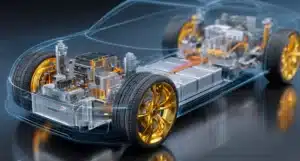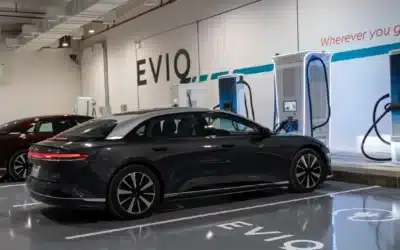
When it comes to traditional petrol or diesel internal combustion engine cars (ICE) most drivers understand that fuel consumption is measured in either litres per 100 kilometres (L/100km) or miles per gallon (mpg).
If a car showroom sales person tells you a family car will do about 50mpg or 6L/100km, you know that’s a very economical car. On the other hand, if the figures quoted are 17mpg or 17L/100km, you’re probably standing in front of a Dodge Challenger Hellcat muscle car where economy is not a consideration!
But how does it work when it comes to electric cars? What’s the appropriate unit of measurement? What’s a good number, and what’s not so great?
What’s the best measure?
Currently manufacturers, dealers and even advertisements and press releases tend to boast of the efficiency of electric vehicles by quoting range. Frankly this is not a good yardstick to assess how economical an EV will be.
The electric range of a car will depend on the battery size and capacity, and as these vary significantly between cars offered on the market, it’s not a sufficient standard of comparison.
What then, is the equivalent of L/100m or mpg when it comes to energy consumption? The most common form of expressing energy efficiency for EVs is kilowatt-hours per 100 kilometres (kWh/100km). This represents the amount of electrical energy consumed per 100km. Essentially, the lower the number, the more efficient it is.
How does it compare to traditional cars?
1kWh/100km is estimated to be equivalent to 0.3 to 0.4L/100km of fuel consumption on a conventional ICE car.
Referring back to the fuel economy figures given as examples above, the family car at 6L/100km would equate to about 17kWh/100km (6 divided by a mean of 0.35L/100km). Similarly, 17L/100km for the muscle car would translate to about 49kWh/100km.
However, actual figures quoted by EV manufacturers indicate that electric cars can actually be more efficient. For example, a family crossover like the MG ZS EV achieves 17.8 kWh/100km, which is on par with a petrol equivalent.
But when it comes to the BMW i4 M50 sports luxury saloon, offering a substantial 544bhp, it has a consumption figure of a maximum of just 22.5kWh/100km. This makes it relatively economical to run for a performance car.
Some electric cars can do far less, for example, the tiny Renault Twizy uses just 6.3kWh/100km.
Keep in mind that, as with ICE cars, the consumption figures quoted by manufacturers may not be the exact figures you achieve in the real world since the energy efficiency of electric cars can vary based on factors such as external conditions and driving style.
Are there other metrics for measuring consumption?
Sometimes a kilometres per kilowatt-hour figure is quoted (km/kWh), which is basically the distance the vehicle can travel on one kilowatt-hour of electricity.
Similar to km/kWh, some might also quote energy consumption as mi/kWh, which would refer to number of miles that can be driven using one kilowatt-hour of electricity.
There’s also kWh/mi which is the Imperial conversion of kWh/100km and indicates kilowatt-hour energy used to travel one mile.
However, it’s important to note that kWh/100km is the most commonly used and standardised unit for energy consumption in the electric vehicle industry, especially in regions that adopt the metric system.
It has to be said though, that it would be helpful to shorten kWh/100km a little further to, say, k/100?
Why is it important to know energy consumption figures?
Apart from being able to compare and contrast electric cars to find out which are the most efficient, it’s also important to keep an eye on energy consumption figures for the simple fact that it will save you money.
As energy costs rocket around the world, you may be cutting out spending at the petrol pump, but you still don’t want a hefty bill from your electricity supplier to land in your post box. So, the lower the kWh/100km figure, the less energy that EV will use, and the cheaper it will be to run.
Additionally, keep in mind that until we move to 100% renewable energy sources, the power station that’s generating the electricity you’re using to charge your car, is also putting out CO2 and other emissions. The more energy your car uses, ultimately the greater the proxy carbon cost.
Which other metrics should be considered?
There is no question that range is a useful metric to consider when choosing an EV, as it gives an indication of how far you might anticipate driving before recharging and you can relate that directly to your own motoring habits and needs.
Battery capacity is measured in kilowatt-hours (kWh) and reveals the amount of energy a battery can store. Larger capacity will usually result in more range, however, bigger batteries will add weight which could reduce the efficiency of the vehicle.
The power output of a car is usually quoted as bhp (brake horsepower), and the same metric is often used for EVs too. However, bhp is traditionally associated with internal combustion engines, where it refers to the power output of the engine without any additional power losses.
In the case of electric vehicles, power outputs are typically and more accurately quoted in kilowatts (kW) since electric motors operate differently to combustion engines. However, bhp is normally used as it’s more familiar and widely known to motorists and car buyers.











